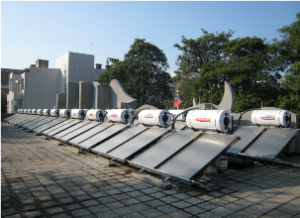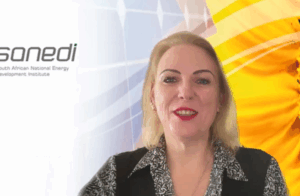Taiwan: National Athletic Games in solar-heated Pools
May 21, 2011
 Both the National High School Athletic Games (April 2011) and the National Intercollegiate Athletics (May 2011) were held at the National Chung Hsing University (NCHU) located in Taichung City, Taiwan. To prepare for these important events, 691 m² of collector area were set up, heating pool water through sunlight. The operating solar thermal system was planned and installed by Taiwanese company Sunwe Pools Enterprise Co., Ltd. based in the same city.
Both the National High School Athletic Games (April 2011) and the National Intercollegiate Athletics (May 2011) were held at the National Chung Hsing University (NCHU) located in Taichung City, Taiwan. To prepare for these important events, 691 m² of collector area were set up, heating pool water through sunlight. The operating solar thermal system was planned and installed by Taiwanese company Sunwe Pools Enterprise Co., Ltd. based in the same city.
Photo: Sunwe
The refurbished indoor swimming facility re-opened in April just before the first National Athletic Games took place. It includes three pools: a competition pool (1523 m³), a training/warm-up pool (525 m³), and a spa (32 m³). The purpose of the solar thermal facility is to heat all the water from ground water level of between 18 and 20°C to 26/27°C in-pool temperature. “We expect an annual solar energy collection of 933,860 MJ,” Yi-Wei Hsu, CEO of Sunwe, explains. This figure translates into 259,405 kWh per year, which corresponds to a specific yield of 375 kWh/m2a. According to a software analysis tool developed by the Taiwanese Industrial Technology Research Institute (ITRI), the NCHU can save up to 65 % of its energy costs while heating its pools.
 Solar circuit: To protect the collectors from chloride swimming pool water, the solar thermal installation at the National Chung Hsing University has been equipped with a heat exchanger. Besides the solar circuit includes a 50 m3 tank where heat can be stored when the pool temperature is reached.
Solar circuit: To protect the collectors from chloride swimming pool water, the solar thermal installation at the National Chung Hsing University has been equipped with a heat exchanger. Besides the solar circuit includes a 50 m3 tank where heat can be stored when the pool temperature is reached.
Figure: Sunwe Pool Enterprise
Sunwe decided to install covered and framed solar thermal collectors with an EPDM absorber at the university. After receiving the EPDM tubings from a supplier, the company assembled them to collector panels in-house which include a stainless steel frame and a tempered glass cover. According to Hsu, the main reasons for choosing this particular collector type were the better performance of the panels and the flexibility of the absorber material. Covered collectors perform better not only in terms of heat absorption, but also in terms of heat losses (see the following table).
| Collector Type |
Collector heat absorption factor |
Collector heat emission factor |
| Non-covered |
0.72 |
0.2 |
| Covered |
0.73 |
0.07 |
Source: Sunwe Pools/Guen Young Enterprise, Taiwan
With its choice, Sunwe expects to increase the lifetime of the system, compared to simple EMPD absorber panels. “Although we always provide regular maintenance, and check a system every month, we expect maintenance work for this installation to be significantly less than for any metal-based flat panel system,” Bon Chen, member of Sunwe’s planning team, adds.
More Information:
http://www.sunwepool.com/eguen/index-n.html
http://www.itri.org.tw/eng/
http://sport100.tcc.edu.tw/
http://2011niag.nchu.edu.tw/
This article was written by Johann Pacher, Managing Director of Faros Consulting Pte Ltd, a company specialised in renewable energies and based in Singapore. http://www.farosconsulting.com


